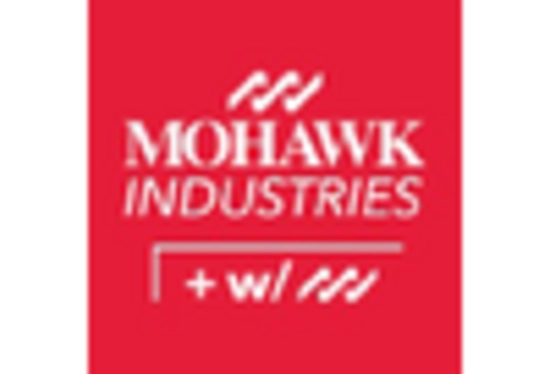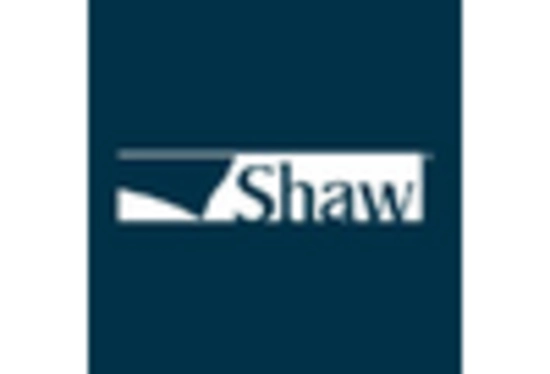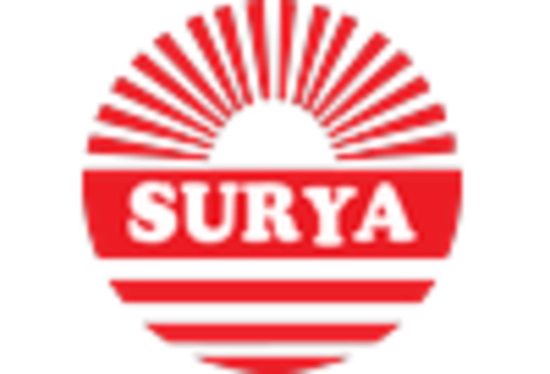Increased Online Retailing
The Area Rugs Market is witnessing a significant transformation due to the rise of online retailing. E-commerce platforms are becoming increasingly popular for purchasing area rugs, as they offer consumers a wider selection and the convenience of shopping from home. Recent statistics suggest that online sales in the home decor sector have surged, with a substantial percentage of consumers preferring to browse and buy rugs online. This trend is likely to continue, as advancements in technology enhance the online shopping experience, including virtual room visualization tools that allow consumers to see how a rug would look in their space. The growth of online retailing is expected to play a crucial role in expanding the reach of the Area Rugs Market, making it more accessible to a broader audience.
Evolving Consumer Preferences
In the Area Rugs Market, evolving consumer preferences are shaping the types of rugs that are in demand. There is a noticeable shift towards rugs that offer both functionality and aesthetic appeal. Consumers are increasingly favoring versatile designs that can complement various interior styles, from modern to traditional. Additionally, the trend towards minimalism and simplicity in home decor is influencing the selection of area rugs, with consumers opting for neutral colors and subtle patterns. Market data indicates that sales of area rugs featuring natural fibers, such as wool and cotton, are on the rise, as they align with the growing preference for sustainable and eco-friendly products. This shift in consumer preferences is likely to drive innovation and diversification within the Area Rugs Market.
Rising Home Decor Expenditure
The Area Rugs Market is experiencing a notable increase in consumer spending on home decor. As disposable incomes rise, households are allocating more resources towards enhancing their living spaces. This trend is particularly evident in urban areas, where the demand for aesthetically pleasing and functional home furnishings is on the rise. According to recent data, the home decor market is projected to grow at a compound annual growth rate of approximately 4.5% over the next few years. This growth is likely to drive the Area Rugs Market, as rugs serve as essential elements in home design, contributing to both comfort and style. Furthermore, the increasing popularity of interior design shows and social media platforms showcasing home decor ideas may further stimulate consumer interest in area rugs.
Growing Awareness of Sustainability
Sustainability is becoming a pivotal factor in the Area Rugs Market, as consumers increasingly prioritize eco-friendly products. There is a growing awareness of the environmental impact of home furnishings, leading to a demand for area rugs made from sustainable materials. Data suggests that the market for sustainable home decor is expanding, with consumers willing to invest in products that align with their values. This trend is prompting manufacturers to innovate and offer rugs made from recycled materials or organic fibers. Furthermore, certifications and labels indicating sustainable practices are becoming more prevalent, influencing purchasing decisions. The emphasis on sustainability is likely to drive growth in the Area Rugs Market, as consumers seek to make environmentally conscious choices in their home decor.
Influence of Interior Design Trends
The Area Rugs Market is significantly influenced by prevailing interior design trends. As design aesthetics evolve, so too does the demand for area rugs that align with these trends. For instance, the resurgence of vintage and retro styles has led to an increased interest in area rugs that feature bold patterns and colors reminiscent of past decades. Additionally, the trend towards open-concept living spaces is driving the need for larger area rugs that can define different areas within a home. Market analysis indicates that the demand for area rugs that incorporate geometric designs and vibrant hues is on the rise, reflecting contemporary design preferences. This dynamic interplay between design trends and consumer choices is likely to continue shaping the Area Rugs Market.


















Leave a Comment